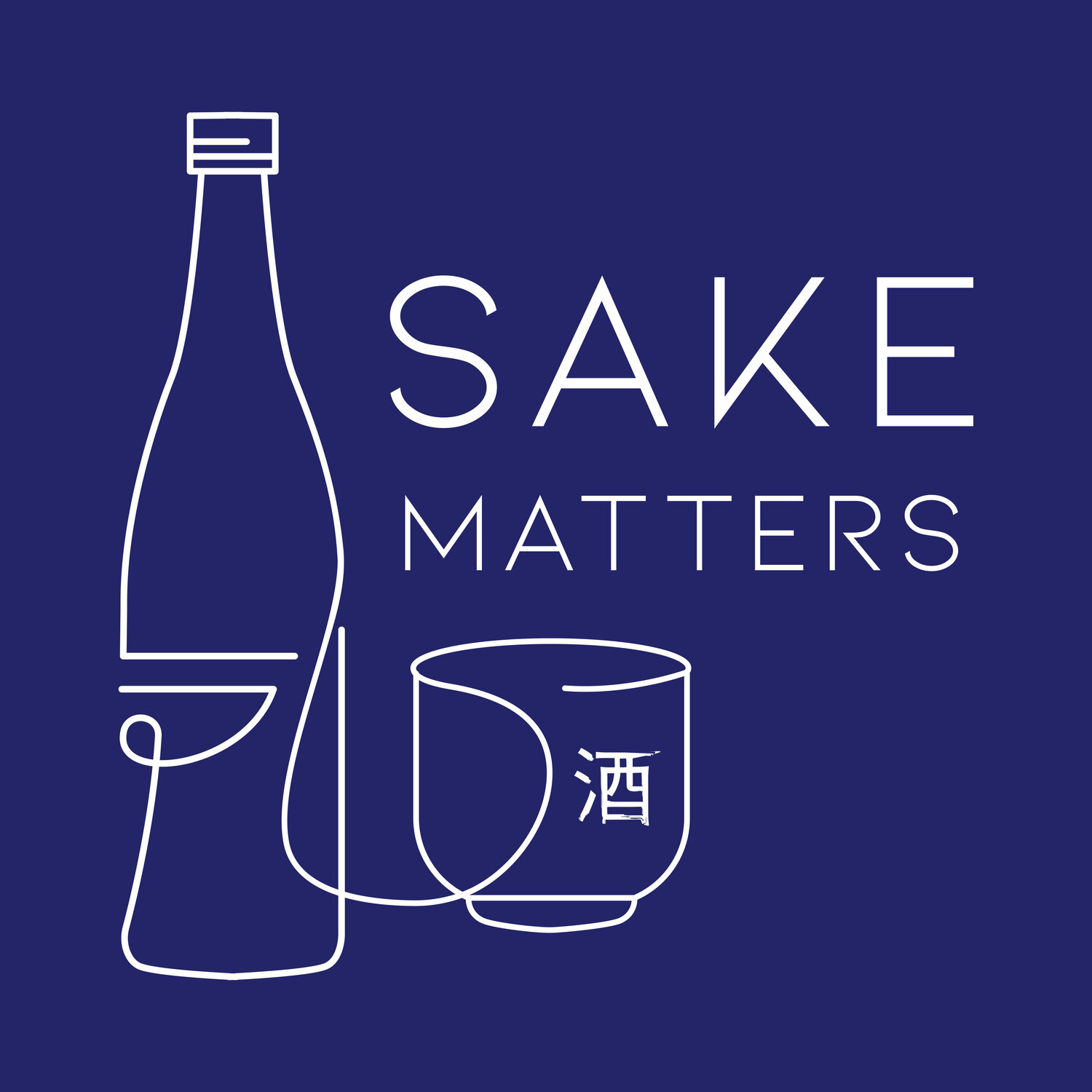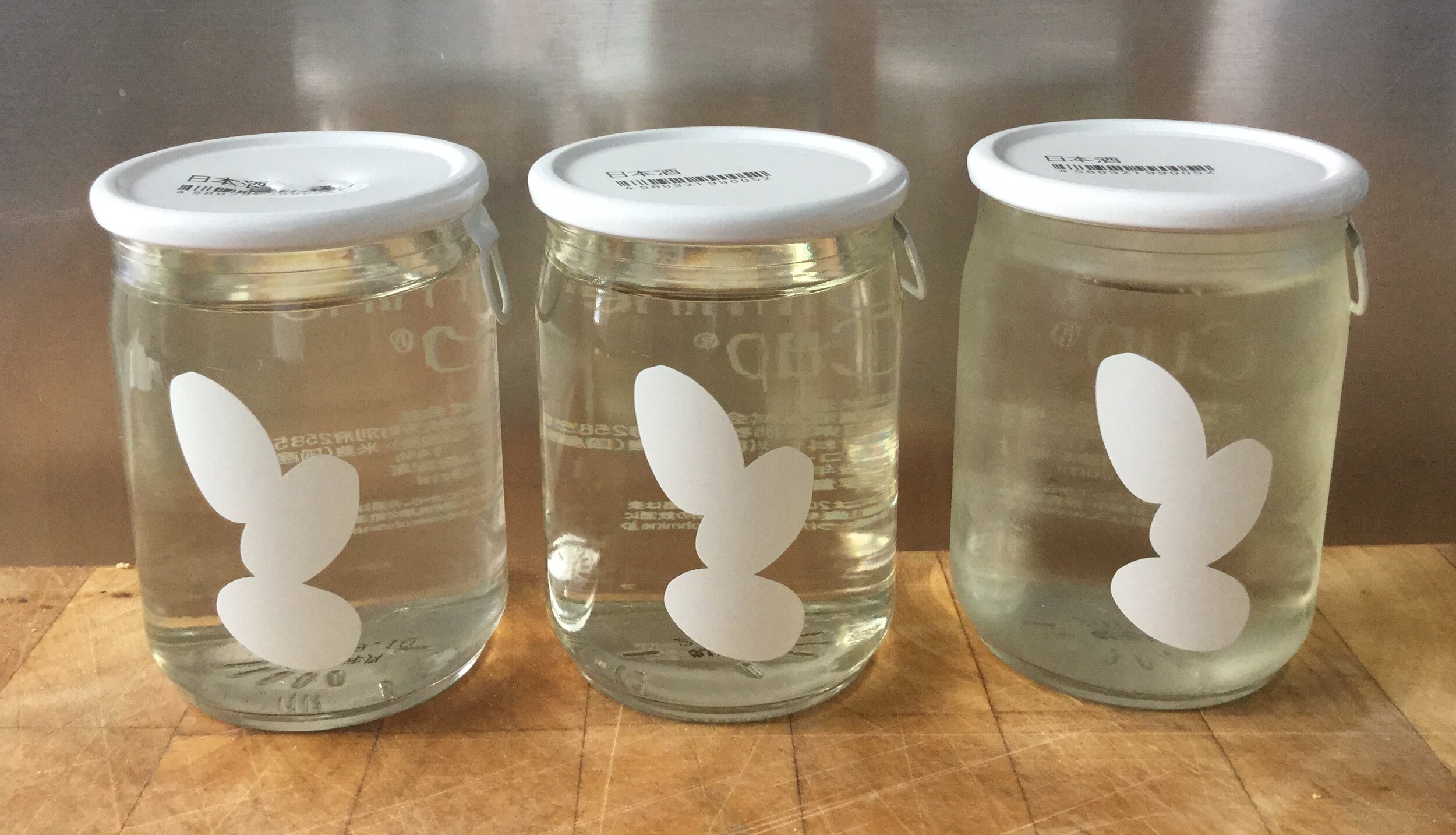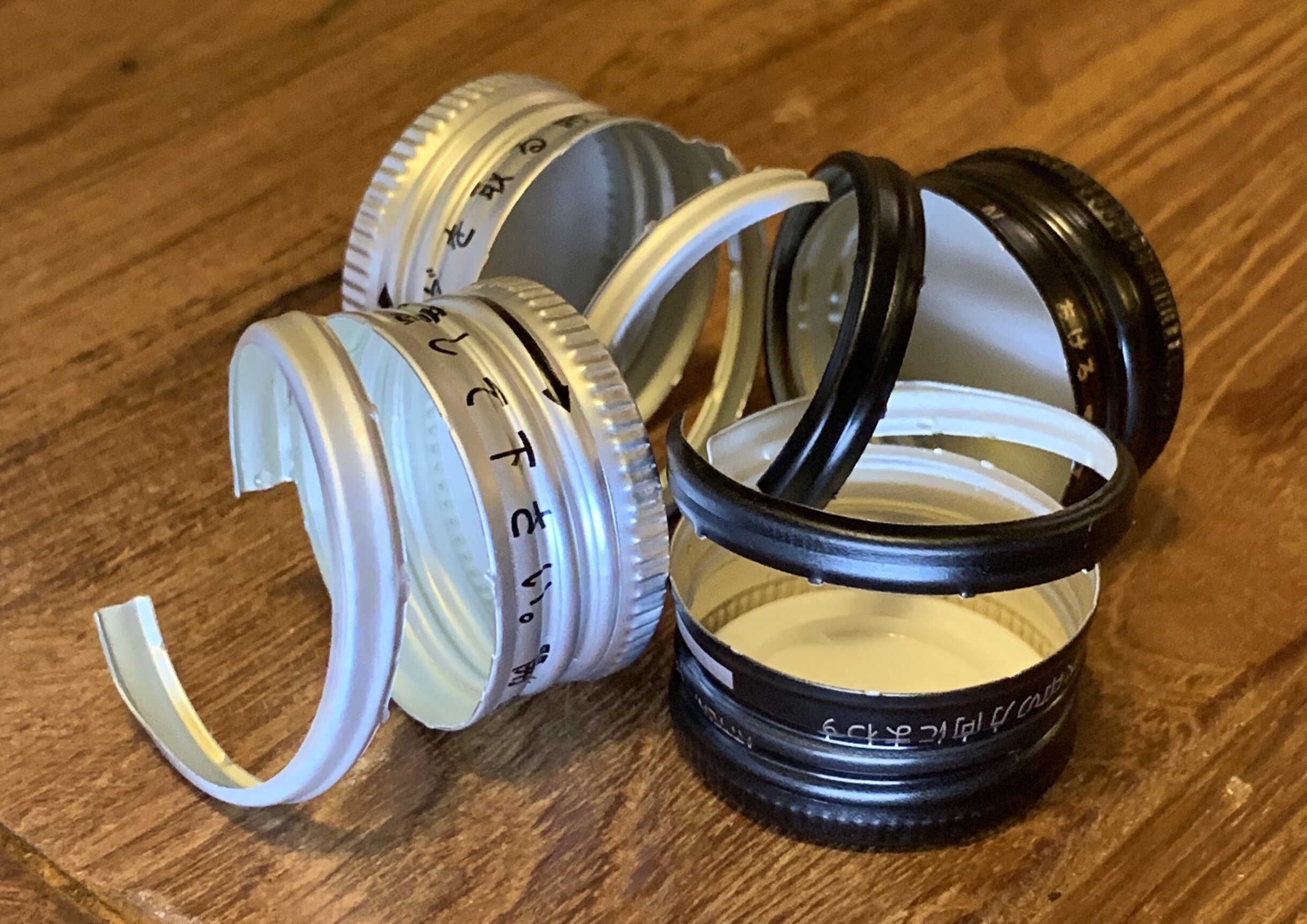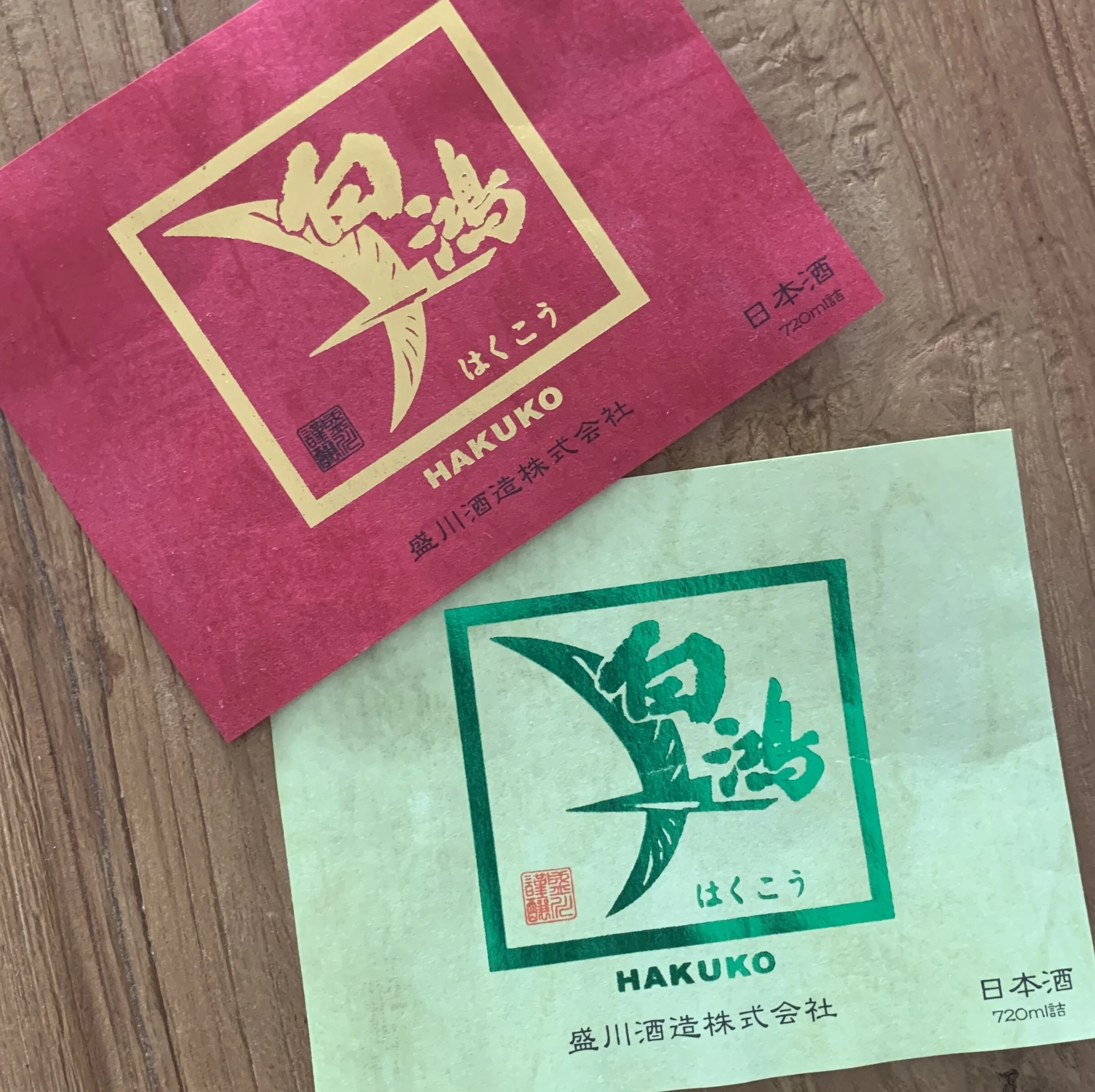TESTING TIMES
Through all the bottles of Sake consumed chez Sake Matters, I can’t recall having had a bad one, one that I didn’t like enough that it was relegated to the drains amidst much cursing and possible retching.
This does feel a little unusual, or just unusually lucky. Sake has a long history of unstable processes and resulting spoilage. There’s a lot of life in the bottle and littered around the brewery itself that need to be eliminated, and that’s saying nothing of the challenges facing export and ongoing supply chain routes.
Time to conduct a little experiment to see if I’ve just been lucky, or my palate is in need of a stern talking to.
It’s got to be thirty years since I last did some sort of scientific experiment, but I still recall my Chemistry teacher’s formulaic treatment of recording the findings, something along the lines of: objective - equipment - method - results - conclusion. So maybe I’ll stick to that for old times’ sake, although he did wear cowboy boots for reasons better known to himself.
So what am I trying to do here? I’ve read a lot about, studied and been online tested on how to identify faults in Sake. My plan back in August, when Hong Kong is at its most swelteringly sticky, was to put some Sake through its paces to try and exacerbate these faults.
Objective: how fast can I spoil some perfectly good Sake and how does it present itself? To make this happen, I chose three one cup Ohmine - Chemistry students aren’t made of money! - and selected the kitchen as my laboratory.
Let the games begin
In terms of the plan, I mean Method, I would use one Ohmine as the Control and the other two would be tasked with enduring a series of circumstances unsuitable for maintaining best condition.
First obstacle is temperature. Although adjacent to a well air-conditioned room, the lab would ordinarily see temperatures of 25°C+ throughout August, well above a normal room temperature existence and certainly well above ideal refrigerator conditions.
Second spoiling catalyst is ultraviolet light, so said Ohmine duo was placed in full glaring sunlight bedside the window. Nice view but good luck with all those rays streaming in over the coming weeks. UVA can go through glass still, even if other UVs can’t.
Note that my one cups use clear glass. Sake tends to be stored in green, blue or brown glass bottles that allow some protection from light. I’ve also seen newspaper wrapped bottles, which is quite nice, adding some context and ‘history’ to the bottle within and some take it one step further with a glitzy survival bag-like wrapper, like this Isshobin I recently got hold of.
And thirdly, don’t feed after midnight. Oh, wait, different experiment. No, thirdly do not expose to oxygen - like wine, Sake will react to oxygen and change its aromatic structure. I think it’s Kikusui’s clever little Namazake one cup that protects the Sake therein from the light by not only an opaque thin aluminium surround but also by generously filling it right to the brim to prevent any contact with air and subsequently oxidising.
So one poor little Ohmine got well and truly pierced - we’ll call him Spike. The other one’s lid would remain intact and as such would be at middle risk of the three - Control would spend the period of the experiment chilling in the refrigerator.
And so it began, my little experiment, and the pair in the window toughed it out for the initial few days. First to go would be the colour so I was expecting some yellowing, particularly with Spike, but this didn’t really kick in until a week had passed, and not discernibly different to the other one’s colouration.
(L to R) Spike, Middle-man, Control…a few days in
Certainly there were no visible floating elements or white cloudiness, nor the stringy lava lamp (great description, John Gauntner) goings on defining the conditions of a Sake that has fallen apart. None of these phenomena arrived, and in fact never came.
Each night temperatures would soar with the AC off, recording a high of 28.9°C as I made coffee one morning. Still they refused to turn significantly.
It’s getting hot in here…
The invisible enemy I was inviting into my kitchen is of course the much maligned bacteria hi-ochi kin火落菌, responsible for an increase in acidity and a characteristically unpleasant stench, rendering the Sake largely undrinkable.
As most Sake is around the 15% ABV mark, this boozy pool prevents most bacteria from growing but hi-ochi kin can cope (up to 25% ABV or more actually), and in fact my kitchen’s 28°C is pretty much their optimum temperature for growth.
Discernable discolouration
So after two weeks of exposure, I really felt any damage that could be done, should be done (and Spike was evaporating), and so it fell to the tasting itself to truly get to the bottom of things.
The effects of the spoilage (hi-ochi火落ち) should resonate clearly as some or all of these charming aromas: musty, rotten veg, earthy, damp soil and fungal. In the case of some Junmai (and my Ohmine one cups) or aged Sakes, brewers walk a fine line between just enough of these and too much. In the right balance they’re a good thing but a little too much and it’s game over.
So for the Control, I predictably get rice flour, a little salinity (aka acidity) and a touch of sweetness, as if from a dusting of icing sugar. Nothing remarkable, pretty much Junmai, and staple one cup quality.
Sunkissed Middle-man on the other hand has become more nutty. I get almonds, and marzipan from a fruit cake that become a little dry and over the hill. The pleasant icing sugar has become more like that metallic taste typical of artificial sweeteners for coffee and tea, and generally it’s verging on a little sourness. But I don’t dislike it. Remember, I’m from a nation weaned on sherry, Madeira and other fortified creations.
Too much sun they say is bad for you…
And so to sunburnt Spike. Do you have that magical bacterial concoction I have thus far avoided? Will I finally witness undrinkable Sake?
No. Sadly not.
Again, remarkably, it tastes alright, although my fellow scientist was less convinced. I wouldn’t say it’s delicious, not even close, but it’s far from liquid rot. I do get a thinner flavoured beverage and it has lost some structure for sure. There’s some ammonia kicking around and some veg that’s turned (“gone south”, another good Gauntnerism).
Added to that it seems to have developed some tannins, become a little abrasive but it’s not quintessentially bad. None of it went down the drain. None even went into a meat sauce or other outlet typically used by the thrifty cook.
Conclusion?
First of all top marks for the plucky little Ohmines for putting up quite a defence of their Junmai-ness. It’s hardy stuff and suggests the brewer does a good job of eliminating any nasties by thorough pasteurization preventing any immediate deterioration.
But it is clear Sake can and will take a turn for the worse, yet in this instance not as fast or dramatically as I had expected. I would perhaps need to write off a Namazake to get the full hi-ochi kin experience which I just can’t bring myself to do, not at Hong Kong prices anyway.
Then for me the quest goes on for a funky lava lamp Sake, I just hope it comes soon, and preferably in a restaurant where I can just exchange it for a fresh glass!
FOOTNOTE:
Many of you may see Middle-man looking worse for wear than Spike, and I do too, but this is a result of my poor photography skills. I would defer to my camera phone but a Scientist never blames his tools.
QUICK GLOSSARY:
Nama(zake): 生酒 (生:raw, fresh, or living; 酒:sake) – in short, unpasteurized Sake
Junmai: Sakes made with no added alcohol are Junmai, the only ingredients are rice, water and Koji mould
LINKS:
Ohmine Shuzou Co., Ltd
〒2585-2 Beppu Shuho, Mine City, Yamaguchi Prefecture, 7540603
0837-64-0700
www.ohmine.jp
info@ohmine.jp
@ohminejp











